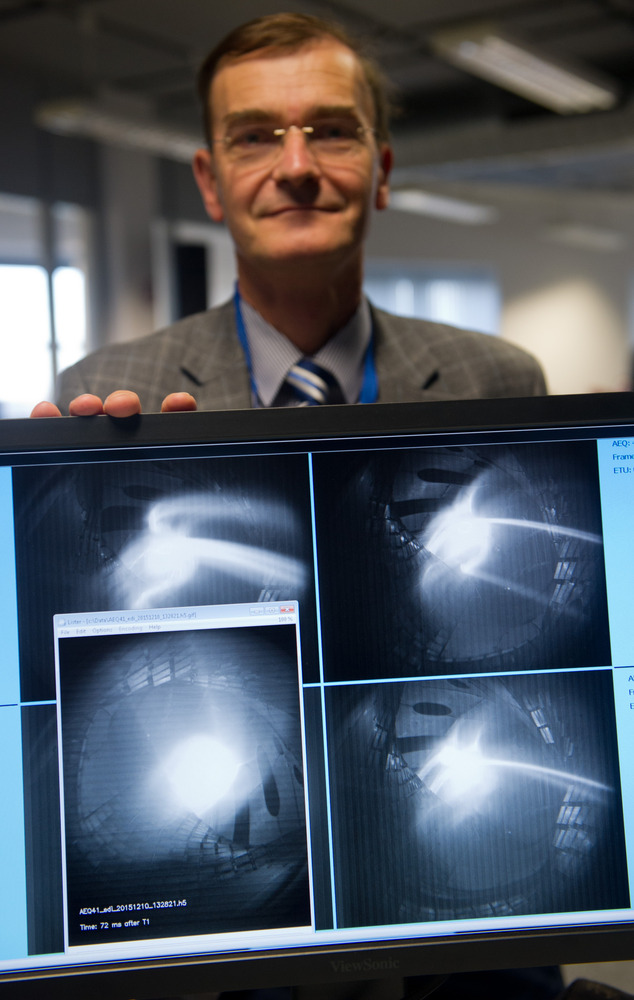The Wendelstein 7-X stellarator received hydrogen plasma

At 17:25 Moscow time, the Max Planck Institute for Plasma Physics (Greifswald, Germany) successfully conducted an experiment in which scientists launched the Wendelstein 7-X fusion reactor to produce plasma. This is the second start-up of the reactor, the first took place on December 10, 2015 , then a helium-plasma start was carried out. In December, the plasma was kept in equilibrium for about 0.1 seconds.
Now the experiment has also been successful, although the time during which the plasma was kept in a stable state is also small and equal to about 0.1 s. Specialists hope to keep the plasma in a stable state for about half an hour - this is the ultimate goal of the experiment.
The first experiment was carried out with helium, the experiment was successful. The second stage also passed successfully - we managed to get a hydrogen plasma, no problems arose. Plasma was obtained using a powerful microwave pulse. According to scientists, an impulse of such power could be obtained by bringing together about 6,000 microwaves.
Wendelstein 7-xThey began to build in 2005, and completed assembly in 2014. After that, scientists prepared the reactor for the experiment, completing preparations only at the end of 2015. The cost of the project reached $ 435 million. Now two types of promising reactors have already been built in the world - a tokamak type reactor and a stellarator type reactor. According to some experts, the stellarator is a more promising type of reactor, since it is easier to keep the plasma in a stable state here than in a tokamak. Project manager Thomas Klinger says that a stellarator is harder to assemble than a tokamak, but easier to manage. True, there are a number of difficulties - for example, the cooling of magnets, which are used to keep the plasma in a stable state.
The main part of Wendelstein 7-X is a large toroid with an outer diameter of 11 m. In it, the rotating plasma is enclosed in a magnetic field so as not to touch the walls. The magnetic field is produced by fifty-fifty 3.5-meter fixed magnetic coils. The other 20 movable magnets are used to target the magnetic field.

Project Technical Director Hans-Stefan
“The impressive results achieved at the start, this is a real event,” said David Anderson, one of the project participants. Interestingly, not all physicists consider the creation of thermonuclear reactors a promising business. Some expressed the opinion (and adhere to it), according to which the work on thermonuclear reactors is a waste of money. The funds required are very significant, but there is no result yet, although attempts to build a thermonuclear reactor have been going on for many years.
But despite criticism, the Germans nevertheless decided to implement a project to create a stellarator, and continue to do everything to achieve their planned goals.
